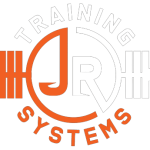As a personal trainer, one of the most common questions I get asked is how to build the ultimate home gym. With the pandemic forcing many people to stay at home, investing in a home gym has become more important than ever. Not only does it save time and money, but it also provides a convenient and safe workout environment. In this blog post, I will provide you with a comprehensive guide on how to build the ultimate home gym, using the top 5 key words for SEO purposes: personal training, fitness, health, strength training, and weight loss.
Personal Training: Assess Your Needs and Goals
Before you start buying equipment, it’s important to assess your needs and goals. What kind of workouts do you enjoy? What are your fitness goals? Are you looking to build muscle, lose weight, or improve your overall health and fitness? Once you have a clear idea of your needs and goals, you can start planning your home gym accordingly.
It’s also important to consider your current fitness level and any injuries or health issues you may have. If you’re a beginner, you may want to start with basic equipment such as dumbbells, resistance bands, and a stability ball. If you have a pre-existing injury, you may need to invest in equipment that is low-impact, such as an elliptical machine or a rowing machine.
Fitness: Choose the Right Space and Flooring
The next step is to choose the right space for your home gym. Ideally, you want a space that is dedicated solely to your workouts, such as a spare room or a garage. Make sure the space has good ventilation and lighting, and that it’s not too cramped. You don’t want to feel claustrophobic while you’re working out.
In addition, you need to consider the flooring. If you’re planning on doing a lot of cardio or high-impact workouts, you may want to invest in rubber flooring to reduce the risk of injury. If you’re doing yoga or Pilates, a softer flooring such as cork or bamboo may be more suitable.
Health: Invest in Quality Equipment
Now comes the fun part: buying equipment! When it comes to home gym equipment, quality is key. You want equipment that is durable, safe, and effective. Here are some essential pieces of equipment you may want to consider:
Dumbbells: Dumbbells are a versatile piece of equipment that can be used for a variety of exercises, from bicep curls to lunges.
Resistance Bands: Resistance bands are a great alternative to weights, especially if you’re a beginner. They’re also great for travel workouts.
Cardio Machines: Depending on your goals and preferences, you may want to invest in a cardio machine such as a treadmill, elliptical machine, or stationary bike.
Strength Machines: If you’re serious about strength training, you may want to invest in a power rack, squat rack, or cable machine.
Stability Ball: A stability ball is a great tool for core workouts and balance training.
Remember, you don’t need to buy everything at once. Start with the essentials and gradually build up your collection.
Strength Training: Create a Balanced Workout Plan
Once you have your equipment, it’s time to create a workout plan. A balanced workout plan should include strength training, cardio, and flexibility training. Here are some tips for creating a balanced workout plan:
Strength Training: Aim to strength train at least twice a week. Focus on compound exercises that work multiple muscle groups, such as squats, deadlifts, and bench presses.
Cardio: Aim to do cardio at least three times a week. Mix up your workouts to keep things interesting, such as running, cycling, and HIIT workouts.
Flexibility Training: Don’t forget to stretch! Incorporate flexibility training into your workouts, such as yoga or Pilates.
It’s also important to vary your workouts to prevent boredom and plateaus. Try new exercises, increase the weight or resistance, and mix up your cardio workouts.
Weight Loss: Monitor Your Progress and Stay Motivated
If weight loss is one of your goals, it’s important to monitor your progress and stay motivated. One way to track your progress is by keeping a workout journal. Write down your workouts, the weight or resistance you used, and how you felt. This will help you see your progress over time and make adjustments to your workout plan as needed.
Another way to stay motivated is by setting realistic goals and rewarding yourself when you achieve them. For example, if your goal is to lose 10 pounds in 2 months, reward yourself with a new workout outfit or a massage when you reach your goal.
Lastly, don’t forget to have fun! Working out should be enjoyable, not a chore. Listen to music, try new exercises, and find a workout buddy to keep you accountable.
In conclusion, building the ultimate home gym requires careful planning, quality equipment, and a balanced workout plan. By following these tips and staying motivated, you can achieve your fitness goals from the comfort of your own home. As a personal trainer, I highly recommend investing in a home gym as it provides a convenient and safe workout environment, especially during these uncertain times. Remember, fitness is a journey, not a destination. Enjoy the process and stay committed to your health and fitness goals.

